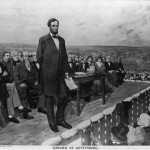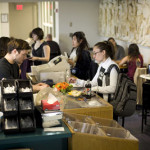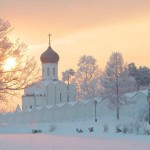Between the new Gates Hall and the goal of Klarman Hall behind Goldwin Smith, University contractors have been busy with construction for the past few months. And after an ambitious announcement made this past Friday, they have a whole lot more to look forward to.
University officials have drawn up a new plan for campus construction that, in essence, aims to build a building anywhere there is soil, grass, trees, water, bedrock or nature. While some may be shocked at the new development plans, most see it as a healthy extension of Cornell’s current trajectory.
Said University President David J. Skorton in his speech to the Board of Trustees, “The academic atmosphere of Cornell is constricted only by its lack of appropriate edifices which forces the mixing of pure disciplines. When a computer scientist and a mechanical engineer are forced to work under one roof, such an atmosphere cannot be conducive to either party. That is why we intend to create a building not just for every department, but for every major, minor, concentration and elective. “
The deans from all seven colleges lauded Skorton’s words. People from the College of Arts and Sciences have been continually complaining about the wide open spaces on the arts quad that just seem to dumb down their lectures to a primitive level. Engineers believe that, instead of just renovating buildings like Upson Hall, it would be much easier to just build an entirely new building where the quadrangle is and have everyone just move their offices there. And architects are thrilled at the thought of hundreds of new ugly buildings to critique.
When asked if the new project would extend into the residential areas to build newer and nicer dorms for students, Skorton replied “No, all of our aims are for purely academic reasons and do not include dormitories. Besides, the dorms are in fine condition. Dickson Hall was completed as recently as 1946”
Indeed, the plan sounds like it will turn Cornell’s campus into a venerable academic city. The project includes blueprints for, namely, the new Jefferson Institute for Just Ginkgo Trees on the Ag quad, the Markey Center for Aquatic Life Studies on top of and extending under Beebe Lake, several buildings dedicated to Venezuelan history on the Arts Quad and the Hyatt Center for Napkin Studies adjacent to the Hotel Administration building.
“Because who needs trees when your endowment is larger than the GDP of some third world countries?” continued Skorton.
The project is set to begin construction in early 2014 and continue to 2056. The estimated yearly rise in the cost of tuition due to this project is estimated to be $2,354,587.10.
Related Posts
Like This!







